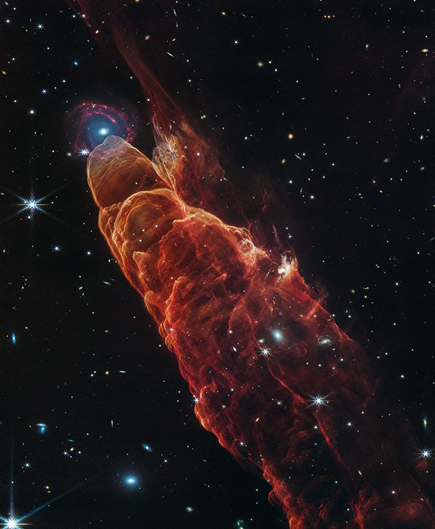New JWST image just dropped.
This object is called Herbig-Haro 49/50. It's the outflow of a still-forming star hidden from view to the lower right of the orangish cone of material oriented diagonally in this image.
As stars form they eject excess matter in the direction of their poles of rotation. That material encounters the interstellar medium in the vicinity and lights up in response. "Like the wake of a speeding boat, the bow shocks in this image have an arc-like appearance as the fast-moving jet from the young star slams into the surrounding dust and gas."
Purely by coincidence, the outflow lines up with a distant background galaxy, which is the circular pinkish/blue object at upper left.
More info about the image: https://science.nasa.gov/missions/webb/nasas-webb-telescope-unmasks-true-nature-of-the-cosmic-tornado/
#Astronomy #Stars #StarFormation #Astrophysics #JWST #SpaceTelescope

